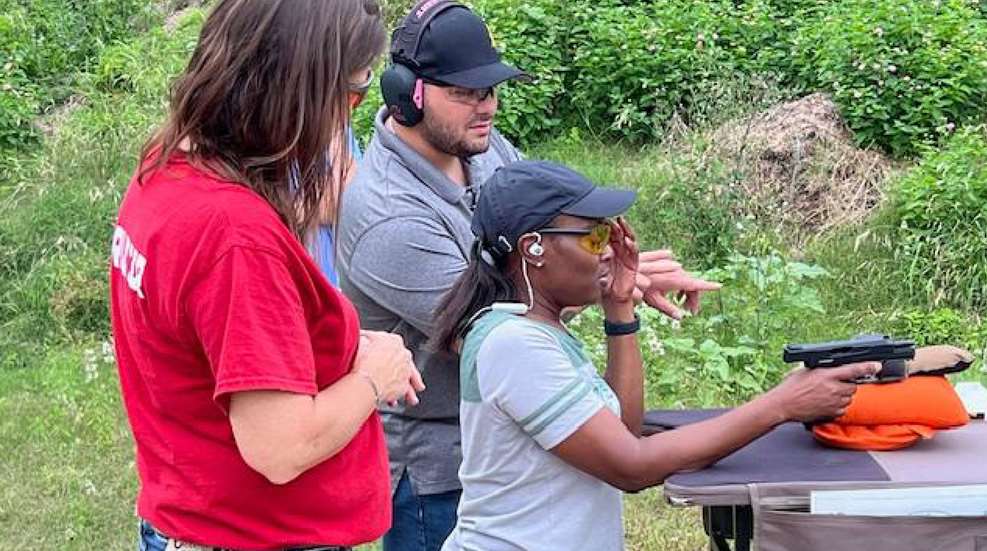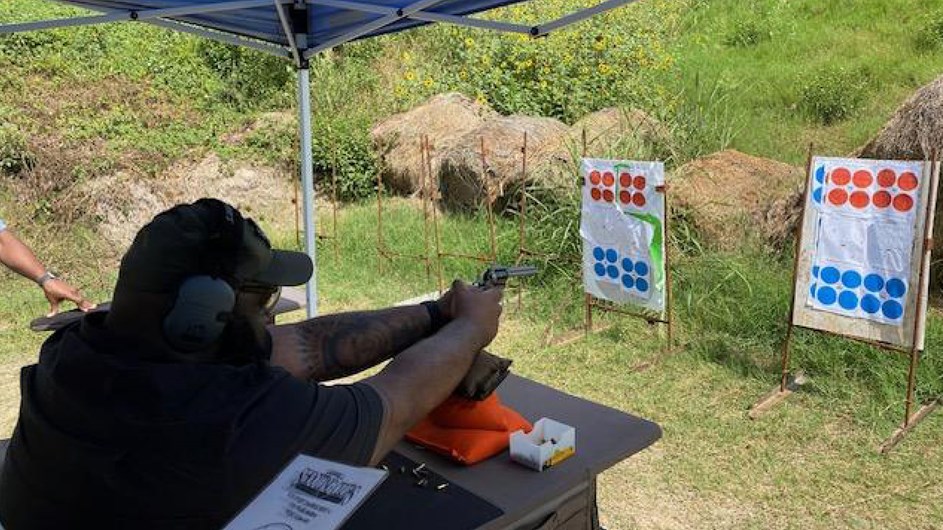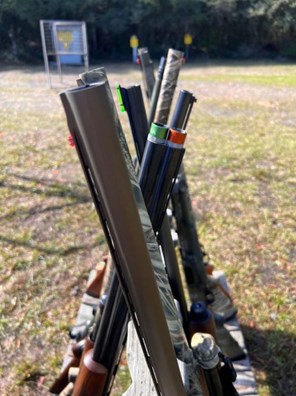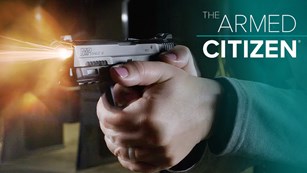
To become a certified NRA Instructor, there are several steps that must be taken to achieve that coveted title. First you must take the NRA Basic Course in whichever discipline you want to become certified to teach. Examples of classes are rifle, pistol and shotgun. Once you complete all the classroom and range objectives and pass the final exam, you can move forward along your NRA Instructor pathway. The next step is to complete the Basic Instructor Training (BIT) and meet the classroom objectives and pass the written exam with a score of 90 percent or better. The final step is to take the NRA Instructor Course in the desired discipline, meet the classroom and range objectives, successfully complete the range qualification, and pass the final written exam.
It is important for any NRA instructor candidate to understand that he or she can meet all the classroom objectives, range requirements, and pass the written exam, but be denied the title of NRA Instructor because of a bad attitude. This is even stated in the NRA’s objective for instructors: To teach the basic knowledge, skills, and attitude for owning and operating a (Rifle, Pistol, or Shotgun) safely. This is why NRA Instructors are considered the “Gold Standard” in firearms training.

It is the “attitude” part that sets NRA Certified Instructors apart from the rest. We have all had good instructors and bad instructors at some point in our lives be it in elementary school, high school, college or even during a firearm training class. What sets good instructors apart from bad instructors is when the students’ needs are met. Most instructors gauge success if their students are better marksmen after the training session than they were before the lesson. For the most part, this is a good way of determining success, but improving your student’s marksmanship does not always meet their needs.
As an instructor, you must first identify the needs of your student before you can meet them. This all boils down to attitude. How do you know if you have the right attitude? To determine if you have the right attitude, ask yourself, “Did I become an instructor to help as many individuals as I can improve their safety and marksmanship while promoting the Second Amendment? Or am I an instructor just to make money? If you are an instructor only to make money, then you will never have the right attitude. If you are the instructor who is concerned with teaching safety and marksmanship while promoting the Second Amendment, then you have the right attitude!
The instructor with the right attitude is more likely to meet their student’s needs. Remember that just improving your student’s marksmanship may not be all you need to address to successfully meet their needs. There are three things that an instructor needs to do to ensure that their student’s needs are met: asking questions, keeping an open mind, and investing in the right equipment.
Asking Questions
Asking questions is where many firearms instructors fail their students. When instructors are contacted by a potential student, he or she needs to take this opportunity to interview them. Start out by asking them what they expect out of training session. You might be surprised by what they tell you!
Many times, a new pistol shooter will tell you that they are looking to become comfortable with their firearm and never even mention marksmanship. Many rifle shooters want lessons to improve their shot placement because are going on a deer hunt and want a quick and clean kill. The instructor must know the distances the inquiring rifle hunter will be shooting and the caliber they will be using. Knowing the vital area of the average whitetail deer is about a 9-inch circle, then precision shooting is not what they want, only improving their marksmanship skills to be successful at that distance, with that caliber, and on that target diameter. Many shotgun shooters want to be effective wingshooters, bringing down the birds they are hunting. This is when it is important for instructors to educate themselves on the right shot size to be used for specific game being hunted by their students.
I recently had a student who wanted to take the NRA Basic Shotgun course. Soon after he registered for the class, I called him to conduct an “interview.” I started by asking him why he wanted to take the class. He stated that he went sandhill crane hunting and did not have much luck bring down one of these prehistoric pterodactyls and was going a second time to try again. If I had not interviewed him, I would have never known what his goals were, so I brushed up on my sandhill crane hunting knowledge. After the training, he not only benefited from additional shotgun knowledge and shooting techniques, but we also discovered he was using too small of shot size. He might not have brought down a crane even if he hit one.
The moral of this story is that no NRA firearms training course covers everything, so it is up to the instructor to educate himself or herself to meet the needs of their students.

Keeping An Open Mind
It is very important for instructors to keep an open mind. The best advice that I give new instructor candidates is to never think you know everything, and to not assume the gun you like is the perfect firearm for everyone else. I enjoy people-watching at the range because I not only pick up new or different techniques, I also see “instructors” that reinforce in my mind what not to do! The worst thing I ever heard one of these so-called instructors say is, “The first thing you need to get is a real gun.” Bad Attitude.
Many times, I interview potential students and I find out that they want to use their firearm and want to feel comfortable with it. It is the “comfortable” part that I key in on. When I hear this, I know that I am dealing with someone that has a firearm that either the salesman or their husband/boyfriend/grandfather, etc. told them they need. I make sure that when I have a student that is dealing with comfort issues with their firearm, I bring three or four different size firearms and a variety of action types. Almost 90 percent of the time, my student ends up preferring a gun that I bring. Once they are comfortable with a firearm, now they can be trained.
It is important to remember that there are no bad action types and not everyone likes semi-automatics and not everyone likes revolvers. No one should ever pick out someone else’s firearm for them. It needs to be their choice. Your job as an instructor is to give options and advice. The firearm that someone chooses to carry is a very personal decision.

Investing In the Right Equipment
Like a successful business practice, it is essential that firearm instructors invest in the right equipment for their “business.” That means spending some of your profits to improve your classes. When a firearms instructor meets a student at the range, he or she should have three or four different actions, styles, and weights of firearms for the training. This is true for rifle, shotgun, and pistol. This also means that you may have to invest in a type of gun that you may not even like. Afterall, can you improve a shooter’s marksmanship if the gun they have does not fit them? The answer is no. Once you identify the problem, overcome obstacles, and put a firearm that fits them into their hands, now they can be trained.
There are other items in addition to guns, that you need to invest in. These include sandbags, shooting benches, canopies, and other items that help during the training process. These items certainly cut into your profits, but ultimately improve the success of your students. Instructors who show up to conduct firearms training without an assortment of different size guns and action types are like plumbers who show up to do a job without the necessary tools and expecting to use the client’s equipment because they were unprepared for the work. Instructors who say to themselves, “They are paying me to teach them to shoot their gun, not mine,” rarely see positive results. Once again, Bad Attitude.
If you maintain a good attitude when instructing, you will have good results. People like to be around others that have a good attitude, and this makes it easier to train. A good attitude produces good results and in turn, leads to more student success. Remember, words spread quickly if you are a good firearms instructor, but spread even quicker if you are a bad instructor!














































